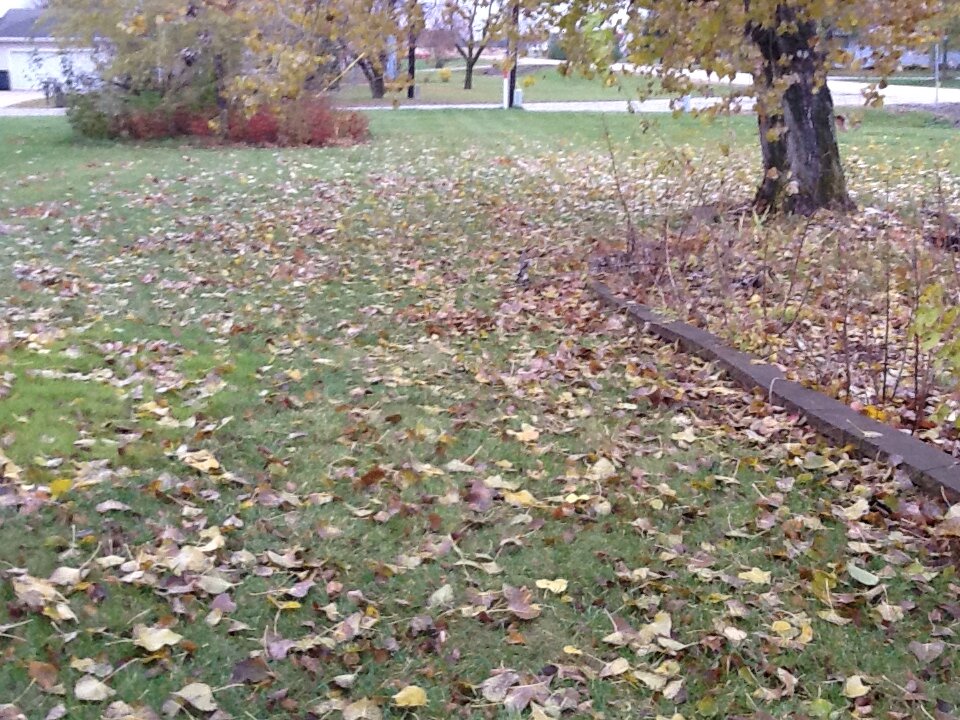Managing Leaves in Your Lawn

Fall is a great time of the year. Trees develop beautiful fall colors, and then those leaves fall to the ground. Tree leaves are fun to play in as a kid and most everyone loves the crunch sound under your feet as we walk over fallen leaves. However, leaves should not be left on the lawn. This can be damaging to turfgrass and to surface water. It is best to use leaves or remove them.
Why Rake
Leaves should be removed from the turf in the fall. If left on the turf over the winter they can smother the grass. They may also cause snow mold to develop during winter. Raking and removing leaves allows turfgrass to dry out on warm days with no snow cover to reduce the risk of snow mold.
Leaves can be a pollutant to surface water if left on the ground. Leaves left on the ground can be washed away to surface water directly and via storm drains. Fallen leaves release phosphorus and nitrogen when they decompose. If that decomposition occurs in the water, an overload of nutrients can contribute to impaired water ecology, such as excess algal growth (From Kelly Feehan, Extension Educator in Platte County Extension).
Other alternatives to raking leaves
Raking leaves can be quite a bit of work. As I drive around town, I notice some landscapes that contain quite a few trees, which as an Arborist, I love. However, in those landscapes it would take a long time to rake all of those leaves. And it really doesn’t matter when you rake your leaves, it seems as soon as you are finished more leaves find their way to your lawn. An easier way to remove leaves is to mow them into the turf.
According to the UNL Turfgrass specialists, mulch mowing can be easier than raking and it returns complex organic matter and nutrients to the soil. Some research also shows mulch mowing may help control weeds. The weed control is sporadic, but possible. Mowing over the area at a higher deck height two or three times will help break down the leaves and incorporate them into the turf for added nutrition for the lawn. Just as grass clippings don’t add to thatch in the lawn, mowing over leaves and leaving them on the lawn will also not contribute to thatch.
Another use for fallen leaves is as a mulch in gardens. You can bag and use them next spring or add them to a compost pile for the addition of carbon that is needed in any compost pile. Or rake them up and around perennials and shrubs for added winter protection.
This article was reviewed by Kelly Feehan